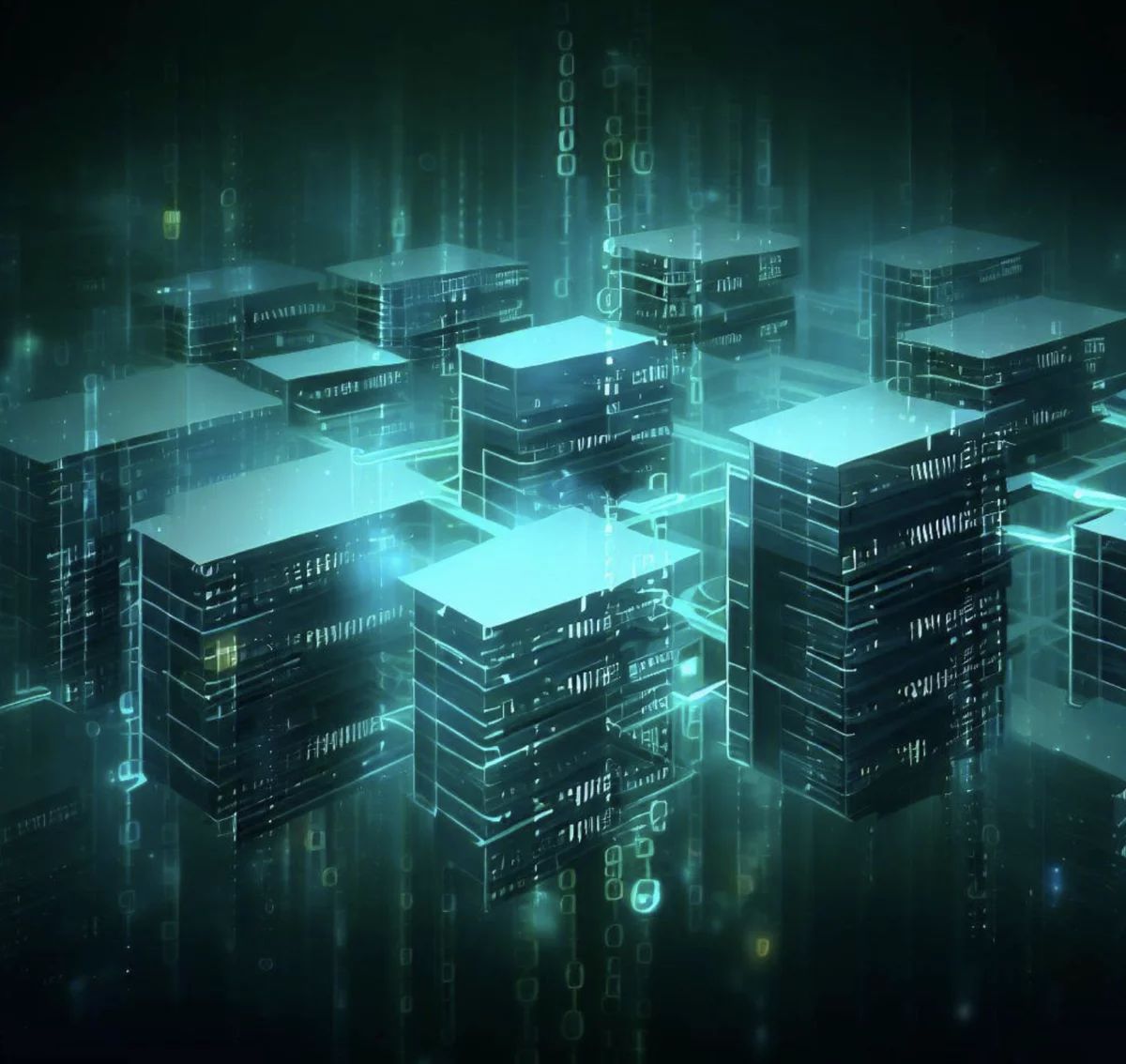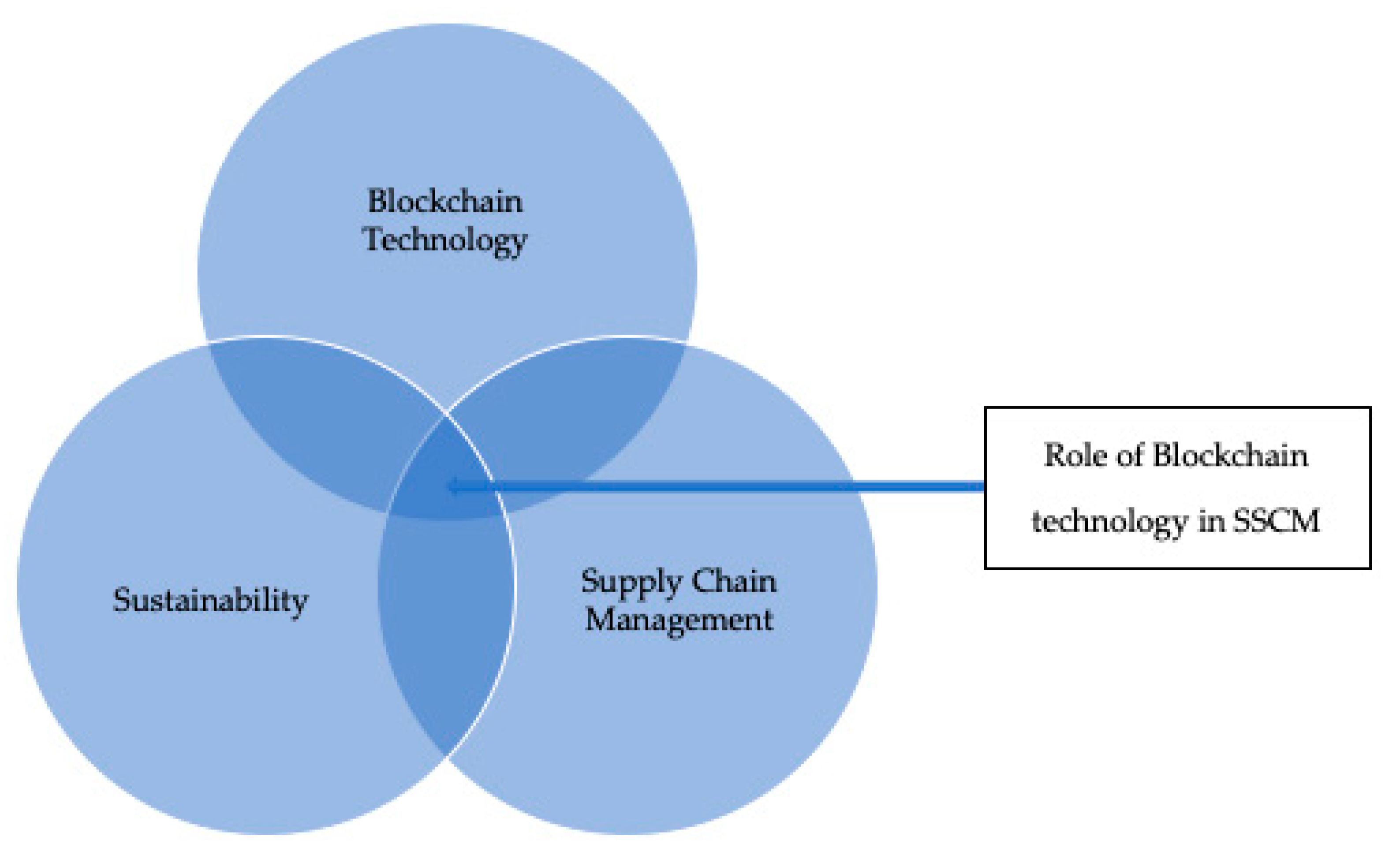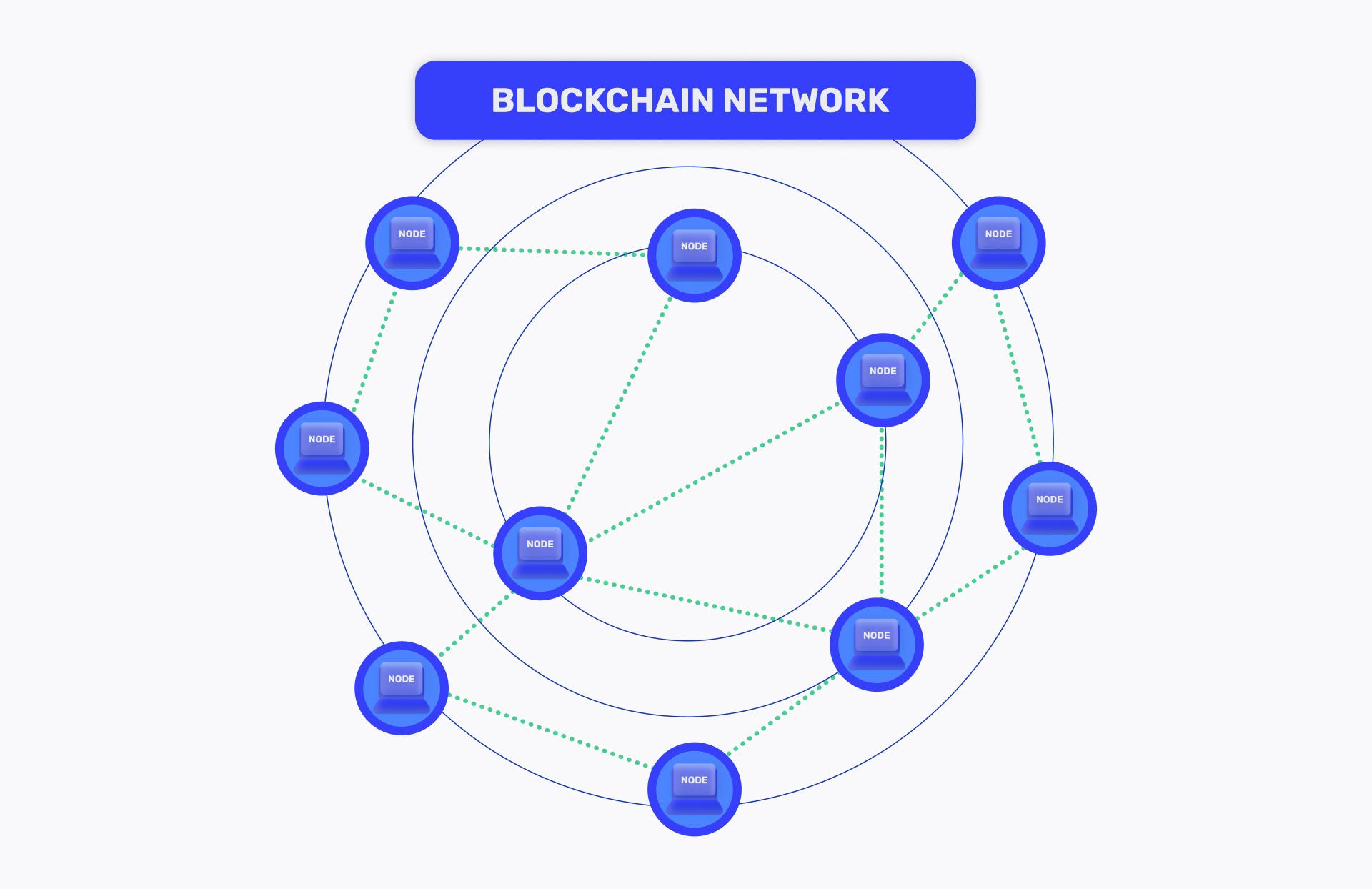Introduction
Welcome to the world of blockchain, a revolutionary technology that is transforming industries and reshaping the way we conduct transactions. Blockchain has gained immense popularity in recent years, becoming the backbone of cryptocurrencies and finding applications in various sectors like finance, supply chain management, and healthcare.
But have you ever wondered where a blockchain is stored? In this article, we will delve into the intricacies of blockchain technology and discuss the different storage methods for this distributed ledger.
Blockchain, in simple terms, is a decentralized and transparent digital ledger that records transactions across multiple computers or nodes. Each transaction, or block, is linked to the previous one, forming an immutable chain of data.
Now, the question arises: where is this chain of blocks stored? The answer lies in the underlying architecture of blockchain, which offers two primary storage options – decentralized and centralized.
Decentralized storage involves distributing the blockchain across various nodes in a peer-to-peer network. Each participating node stores a copy of the entire blockchain, ensuring redundancy and data integrity. This distributed nature eliminates the reliance on a single central authority, making the system resilient and less prone to tampering or data loss.
On the other hand, centralized storage entails relying on a single entity or organization to store and manage the blockchain. In this setup, the blockchain is typically stored in a centralized server or cloud infrastructure controlled by a central authority. While this approach may offer convenience and efficient management, it raises concerns about data security, censorship, and vulnerability to attacks.
What is blockchain?
Blockchain is a groundbreaking technology that enables secure and transparent digital transactions among multiple parties without the need for intermediaries. At its core, blockchain is a distributed ledger that records and verifies transactions in a permanent and tamper-proof manner. It operates on a decentralized network, making it resistant to fraud, manipulation, and unauthorized changes.
The concept of blockchain was first introduced in 2008 by an anonymous person or group of people known as Satoshi Nakamoto. It gained widespread recognition with the launch of Bitcoin, the first cryptocurrency built on blockchain technology.
Essentially, a blockchain is a series of blocks, where each block contains a list of transactions. These blocks are chronologically linked together, forming a continuous and immutable chain of data. Transactions stored in a blockchain are verified by a network of computers, called nodes, through a consensus mechanism.
One of the key features of blockchain is its transparency. Every participant in the network can access and view the entire transaction history recorded on the blockchain. However, the personal information of the parties involved remains encrypted and anonymous.
Another crucial aspect of blockchain is its decentralization. Unlike traditional centralized databases that are managed by a single entity, blockchain stores data across multiple nodes in a peer-to-peer network. This distributed architecture ensures that no single point of failure exists and eliminates the need for intermediaries, such as banks or payment processors.
Blockchain operates on the principles of cryptography, using advanced mathematical algorithms to secure the data stored in each block. Once a block is added to the chain, it becomes virtually impossible to alter or delete the information stored within it, providing an immutable and auditable record of transactions.
Initially, blockchain technology was predominantly associated with cryptocurrencies. However, its potential extends far beyond digital currencies. Blockchain has the capability to revolutionize various industries, including supply chain management, healthcare, finance, real estate, and more. Its unique properties of transparency, security, and decentralization make it an attractive solution for improving efficiency, reducing costs, and enhancing trust in a wide range of applications.
How does blockchain work?
Understanding how blockchain works requires unraveling the intricate processes that power this innovative technology. At its core, blockchain operates on a series of key components and mechanisms that ensure the secure and transparent recording of transactions. Let’s dive into the inner workings of blockchain:
1. Distributed Ledger: Blockchain is built on the concept of a distributed ledger, which means that the data is stored across multiple nodes in a decentralized network. Each participating node maintains a copy of the entire blockchain, ensuring redundancy and data availability.
2. Transaction Verification: When a transaction occurs, network nodes validate and verify its authenticity. They check if the transaction is correctly formatted, the digital signatures are valid, and the sender has sufficient funds. This verification process ensures the integrity and transparency of the blockchain.
3. Consensus Mechanism: To maintain the integrity of the blockchain, a consensus mechanism is used. This mechanism ensures that all nodes agree on the order and validity of transactions. The most common consensus algorithms are Proof of Work (PoW) and Proof of Stake (PoS), which require nodes to solve complex mathematical puzzles or stake cryptocurrency to participate in block validation.
4. Block Creation: Validated transactions are bundled together into blocks. Each block contains a unique identifier, a timestamp, a reference to the previous block, and the transactions data. This chaining mechanism creates a sequential and unchangeable record of transactions.
5. Mining: In the context of blockchain, mining refers to the process of adding new blocks to the blockchain. Miners, using powerful computers, compete to solve complex mathematical problems. The first miner to solve the problem gets the right to add a new block to the chain and is rewarded with cryptocurrency.
6. Consensus Validation: Once a block is mined, it is propagated across the network, and each node independently validates its contents. Nodes confirm that the block adheres to the consensus rules and that the transactions within it are valid. If a block is deemed invalid, it is rejected by the nodes.
7. Blockchain Security: Blockchain achieves a high level of security through the use of cryptography. Each transaction is secured using cryptographic algorithms, making it practically impossible to alter or tamper with the data. Additionally, the distributed nature of blockchain ensures that it is resistant to attacks and single points of failure.
8. Continuous Growth: As new blocks get added to the chain, the blockchain grows longer and more secure. The longer the blockchain, the more challenging it becomes to manipulate or alter the data stored within it.
By combining these fundamental elements, blockchain creates a trusted and decentralized system that enables secure and transparent transactions. Its innovative design has the potential to revolutionize industries across sectors, paving the way for a new era of efficiency, transparency, and trust.
Where is a blockchain stored?
The storage of a blockchain depends on the chosen architecture, which can be either decentralized or centralized. Let’s explore how each method handles the storage of a blockchain:
Decentralized Storage: With decentralized storage, the blockchain is distributed across multiple nodes in a peer-to-peer network. Each participating node maintains a complete copy of the blockchain, ensuring redundancy and data integrity. This architecture ensures that no single point of failure exists and eliminates the need for a central authority or server to store the blockchain.
In a decentralized storage setup, all nodes communicate with each other to verify and propagate new transactions and blocks. When a new block is added to the chain, it is immediately shared and synchronized across all nodes in the network. The decentralized nature of this storage ensures that the blockchain remains available, even if some nodes go offline.
Centralized Storage: On the other hand, centralized storage involves relying on a single entity or organization to store and manage the blockchain. In this scenario, the blockchain is typically stored on a centralized server or cloud infrastructure controlled by a central authority. This central entity is responsible for maintaining the security, availability, and integrity of the blockchain data.
While centralized storage may offer convenience and efficient management, it raises concerns about data security and control. All participating nodes must trust the central authority to handle the security of the stored blockchain properly. Additionally, centralized storage is vulnerable to attacks or censorship by malicious actors, as compromising the central server can lead to unauthorized modifications or data loss.
Whether the blockchain is stored in a decentralized or centralized system, it is essential to ensure the proper encoding and validation of the data. The data stored in a blockchain is typically encoded using the HTML encoding standard to ensure compatibility and consistency across different platforms and applications.
Overall, the choice between decentralized and centralized storage for a blockchain depends on various factors, including the desired level of security, trust, and control. Decentralized storage offers greater resilience, transparency, and resistance to censorship, while centralized storage provides ease of management and efficiency at the cost of increased vulnerability to single-point failures.
Storing a blockchain on a decentralized network
Storing a blockchain on a decentralized network is a key characteristic of blockchain technology that ensures transparency, security, and resilience. Distributed storage across a network of nodes eliminates the need for a central authority and provides numerous benefits. Let’s explore the advantages and considerations of storing a blockchain on a decentralized network:
Redundancy and Data Integrity: Decentralized storage ensures redundancy by maintaining multiple copies of the blockchain across participating nodes. If one node becomes unavailable or experiences data corruption, other nodes in the network can still provide access to the complete and up-to-date blockchain. This redundancy enhances data integrity and reduces the risk of data loss or manipulation.
Transparency and Auditability: Storing a blockchain on a decentralized network enables transparency and auditability. Each participating node in the network holds an identical copy of the blockchain, allowing anyone to view and verify the recorded transactions. This transparency fosters trust among participants, as it eliminates the reliance on a single controlling entity and allows for independent verification of the data.
Resistance to Tampering: A decentralized network provides a higher level of security and makes it difficult for malicious actors to tamper with the stored blockchain. As the blockchain is distributed across multiple nodes, any attempt to alter a block would require tampering with a majority of the nodes simultaneously. This level of consensus and redundancy in the network makes it highly resistant to tampering and ensures the immutability of the recorded transactions.
Improved System Resilience: Decentralized storage enhances the resilience of a blockchain system. If some nodes in the network go offline or are compromised, the remaining nodes can still continue to validate new transactions and maintain the integrity of the blockchain. This decentralized architecture reduces the risk of a single point of failure, ensuring the uninterrupted operation of the blockchain even in the face of disruptions.
Community Participation: Storing a blockchain on a decentralized network encourages community participation and fosters a sense of ownership among participants. Each node in the network is responsible for maintaining the blockchain’s integrity and contributing to the consensus mechanism. This inclusive approach promotes decentralization, democratic decision-making, and trust among the network participants.
Despite these advantages, storing a blockchain on a decentralized network does present some challenges. The scalability of the network can become a constraint as the blockchain grows in size and transaction volume. Additionally, the storage requirements for each participating node can increase over time, demanding substantial disk space and computational resources.
Despite these challenges, the benefits of storing a blockchain on a decentralized network in terms of security, transparency, and resilience make it an attractive choice for many blockchain applications. The decentralized storage model aligns with the core principles of blockchain technology by eliminating single points of failure and maintaining a trustworthy and auditable ledger.
Storing a blockchain on a centralized network
While decentralization is a key characteristic of blockchain technology, storing a blockchain on a centralized network can also provide certain benefits and considerations in specific use cases. Let’s explore the advantages and considerations of storing a blockchain on a centralized network:
Efficient Management: Storing a blockchain on a centralized network allows for more efficient management and maintenance of the blockchain data. A central authority or organization can handle the storage, backup, and security measures, reducing the burden on individual nodes in the network. This centralized approach can streamline the administrative tasks associated with maintaining the blockchain.
Ease of Access: With a centralized network, accessing the blockchain data becomes more straightforward. Participants can rely on a centralized server or cloud infrastructure to access the blockchain, eliminating the need to synchronize and maintain a full copy of the blockchain on their own devices. This ease of access can enhance user experience and facilitate the integration of blockchain technology into existing systems.
Enhanced Security Measures: Centralized storage allows for stronger security measures to protect the blockchain data. The central authority or organization can implement robust security protocols, such as firewalls, intrusion detection systems, and encryption, to safeguard the stored blockchain from unauthorized access or tampering. Centralized storage can provide enhanced control and monitoring capabilities, reducing the risk of security breaches.
Scalability and Performance: Storing a blockchain on a centralized network can offer better scalability and performance as compared to a decentralized network, especially in cases where the blockchain experiences a high volume of transactions. Centralized servers or cloud infrastructures can handle larger workloads and process transactions more efficiently, ensuring faster transaction confirmation and reducing latency.
Cost Efficiency: In some scenarios, centralized storage of a blockchain can be more cost-effective. Participants in the network do not need to invest in expensive hardware or allocate substantial disk space to store the entire blockchain. Instead, they can rely on the infrastructure provided by the central authority, reducing the upfront costs and ongoing maintenance expenses associated with decentralized storage.
However, storing a blockchain on a centralized network also comes with considerations and potential drawbacks. Centralized storage raises concerns about reliance on a single point of failure. If the central server or infrastructure experiences downtime or is compromised, it can disrupt the accessibility and availability of the blockchain data. Additionally, centralized storage can be subject to censorship and control by the central authority, potentially undermining the decentralized nature and the fundamental principles of blockchain technology.
Ultimately, the decision to store a blockchain on a centralized network depends on the specific requirements, use case, and trade-offs that need to be considered. While centralized storage offers efficiency, scalability, and security benefits, it is crucial to carefully assess the potential risks and evaluate whether the trade-offs align with the goals of the blockchain implementation.
Benefits of decentralized storage for blockchain
Decentralized storage is a fundamental characteristic of blockchain technology that offers numerous benefits for storing and maintaining a blockchain. Let’s explore some of the advantages of using decentralized storage:
Enhanced Security: Decentralized storage provides a higher level of security for a blockchain. As the blockchain is distributed across multiple nodes in a network, it becomes highly resistant to hacking, tampering, and data loss. Each block in the chain is encrypted and verified by the network, ensuring the integrity and immutability of the stored data.
Improved Data Integrity: By storing the blockchain on a decentralized network, data integrity is significantly enhanced. Since multiple copies of the blockchain are held by different nodes, any attempts to alter or manipulate the data would require simultaneous modification of a majority of the nodes. The consensus mechanism employed by the decentralized network ensures that only valid and authorized transactions are added to the blockchain, maintaining the accuracy and trustworthiness of the data.
Transparency and Trust: Decentralized storage fosters transparency and trust among participants. All transactions recorded on the blockchain are visible to everyone in the network, ensuring transparency and eliminating the need for intermediaries. The distributed nature of the blockchain ensures that no single authority has control over the stored data, enhancing trust among participants and reducing the reliance on centralized entities.
Data Redundancy: Decentralized storage provides data redundancy, ensuring that the blockchain remains available even if some nodes go offline or are compromised. Each node holds a complete copy of the blockchain, ensuring that data is not lost in the event of hardware failures or network disruptions. The redundancy offered by decentralized storage improves the reliability and availability of the blockchain.
Resilience to Attacks: Decentralized storage makes the blockchain more resilient to attacks. Since the data is not centralized in a single location, it becomes difficult for malicious actors to launch targeted attacks. The distributed nature of the storage mitigates the risk of single-point failures and provides a higher level of security against hacking attempts and malicious activities.
Independence from Central Authorities: Decentralized storage allows the blockchain to operate independently of central authorities or intermediaries. The lack of reliance on a single controlling entity increases the system’s resilience, reduces the potential for censorship, and ensures that no single point of failure exists. This independence aligns with the core principles of blockchain technology, providing a more democratic and inclusive environment.
By leveraging decentralized storage, blockchain technology harnesses the power of distributed networks to achieve enhanced security, transparency, and trust. These benefits make decentralized storage a preferred choice for many blockchain applications, from cryptocurrencies to supply chain management and beyond.
Challenges of decentralized storage for blockchain
While decentralized storage offers numerous benefits for blockchain technology, it also presents some challenges that need to be addressed. Let’s explore the key challenges of decentralized storage for blockchain:
Scalability: One of the significant challenges of decentralized storage is scalability. As the blockchain grows in size with an increasing number of transactions, the storage requirements for each participating node also increase. This can pose challenges for individual nodes with limited resources, especially in cases where the blockchain experiences a high volume of transactions. Efforts are being made to develop scalable solutions, such as sharding and off-chain storage, to address this challenge.
Storage and Bandwidth Requirements: Storing a complete copy of the blockchain on each participating node can require significant storage space and consume a substantial amount of bandwidth. In some cases, these storage and bandwidth requirements can be prohibitive for less powerful devices or networks with limited resources. This challenge can limit the accessibility and participation of nodes with constrained capabilities, hindering the decentralization objective.
Network Consensus and Synchronization: Achieving consensus and efficient synchronization among distributed nodes is critical for maintaining the integrity and consistency of the decentralized storage. In a large network, achieving consensus on the validity and chronological order of transactions can introduce latency and require significant computational resources. Developing efficient consensus mechanisms and synchronization protocols is a challenge that needs to be overcome to ensure the smooth operation of decentralized storage.
Data Privacy and Security: Decentralized storage introduces data privacy and security concerns. As multiple copies of the blockchain are distributed across nodes, it is crucial to ensure that sensitive and confidential information is adequately protected. While blockchain technology itself provides encryption and immutability, additional measures like encryption of individual data elements and securing node access become essential to safeguard the privacy and security of the stored data.
Governance and Decision-making: Decentralized storage often requires collective decision-making and governance among participants. Establishing effective governance models and mechanisms for decision-making can pose a challenge, especially when multiple stakeholders with diverse interests are involved. Ensuring alignment, consensus, and fair representation in governance models is crucial for successful decentralized storage of a blockchain.
Regulatory and Legal Considerations: Decentralized storage may face regulatory and legal challenges in different jurisdictions. The lack of centralized control, issues with data jurisdiction, and compliance with privacy and data protection laws may vary across regions. Navigating these legal and regulatory considerations can pose challenges and require collaboration between blockchain developers, legal experts, and policymakers.
Addressing these challenges requires ongoing research and development efforts to improve the scalability, efficiency, security, and governance of decentralized storage for blockchains. As blockchain technology continues to evolve and mature, innovative solutions will emerge to overcome these challenges and unlock the full potential of decentralized storage.
Conclusion
The storage of a blockchain plays a crucial role in ensuring the security, transparency, and reliability of the recorded transactions. Decentralized storage, with its distributed nature, has emerged as the preferred method for storing blockchains. It offers numerous benefits, including enhanced security, improved data integrity, transparency, and resistance to tampering. Decentralized storage also promotes trust and independence from central authorities, fostering a more democratic and inclusive environment for blockchain applications.
However, decentralized storage does come with its own set of challenges. Scalability, storage, and bandwidth requirements, network consensus, data privacy, governance, and legal considerations are some of the challenges that need to be addressed to fully leverage decentralized storage for blockchains. Ongoing research and development efforts are underway to overcome these challenges and develop efficient solutions.
On the other hand, centralized storage provides efficient management, ease of access, enhanced security measures, scalability, and cost efficiency for certain use cases. However, it raises concerns about reliance on a single point of failure and challenges the decentralized nature and principles of blockchain technology.
The choice between decentralized and centralized storage depends on the specific requirements, trade-offs, and goals of a blockchain implementation. Evaluating the benefits and challenges of each storage method is essential to make informed decisions.
Ultimately, the storage of a blockchain will continue to evolve as blockchain technology advances. Innovation in consensus mechanisms, scalability solutions, privacy-enhancing technologies, and governance models will further enhance the efficiency, security, and accessibility of blockchain storage.
Whether through decentralized or centralized storage, the underlying goal remains the same – to create a secure, transparent, and resilient system that can revolutionize industries across the globe. As blockchain technology continues to reshape our world, the storage of blockchains will continue to be a critical aspect in harnessing the full potential of this transformative technology.

























